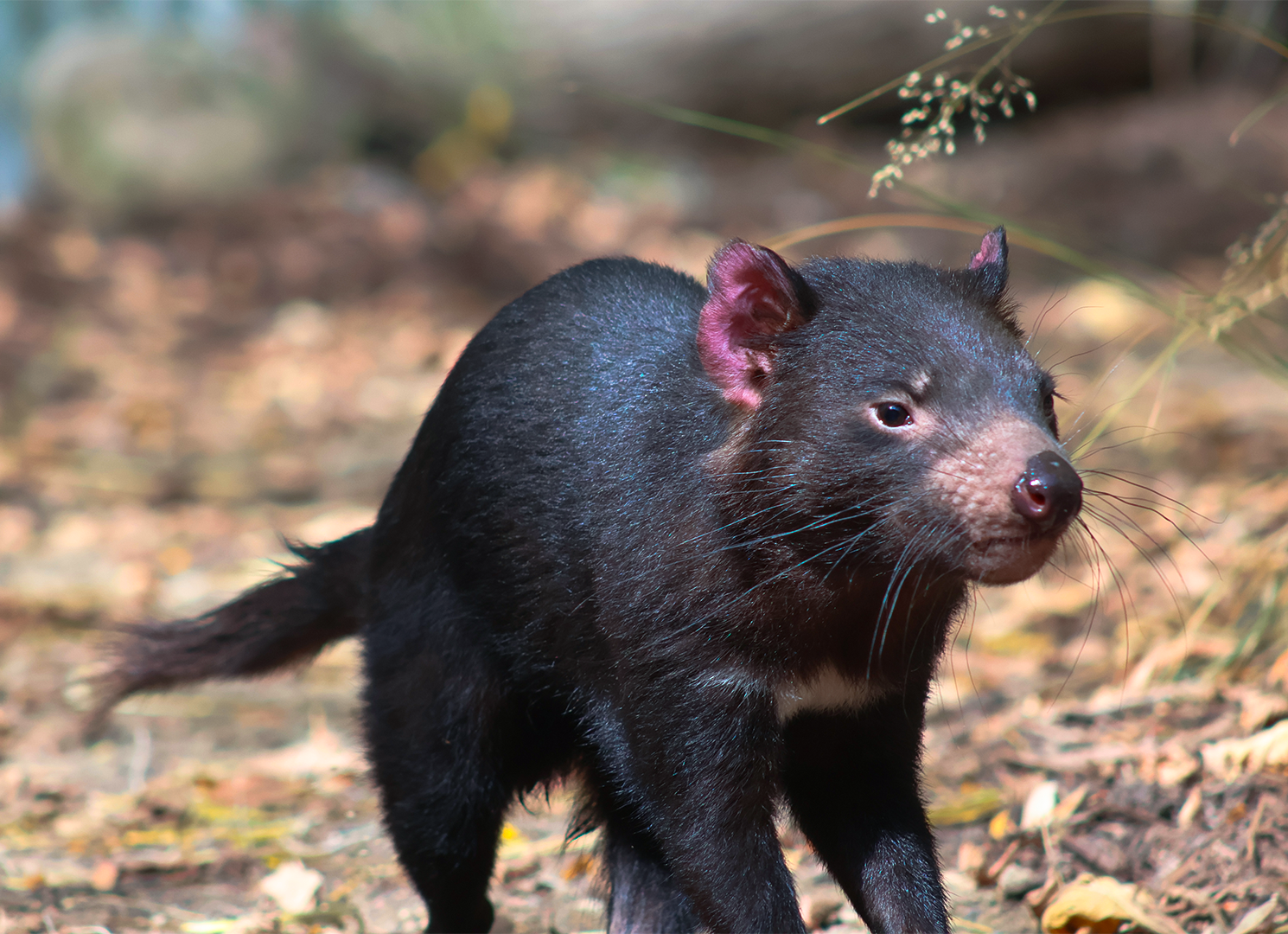I LIVE IN TASMANIA
Tasmanian devils are native only to the island of Tasmania, located off the southeastern coast of Australia. Although they can be found across the whole island, they prefer areas with coastal shrublands and forests. They typically will find caves, bushes, and abandoned animal burrows for shelter.
I AM A SCAVENGER
First and foremost, Tasmanian devils are scavengers, meaning they will primarily consume carrion (dead animals). However, they will also hunt and consume live prey such as small mammals and birds.
TASMANIAN DEVILS ARE SOLITARY
Tasmanian devils are solitary animals and do not form groups. Young Tasmanian devils will stay with their mothers until they are 9 months old, after which they are completely independent.
TINY BUT MIGHTY
When baby Tasmanian devils, or joeys, are born, they are no bigger than a grain of rice. When they are born, they make the long journey of climbing up their mother’s stomach to get to her pouch, where they will spend the next four months.
HELPING THE TASMANIAN DEVIL IN THE WILD
The Fort Wayne Children’s Zoo is a proud supporter of the Save the Tasmanian Devil Program. Created in 2003 in response to the threat of Devil Facial Tumor Disease (DFTD) Tasmanian devils were facing, Tasmanian devil populations that succumbed to DFTD have declined as much as 80% since the first recorded case.
I AM IMPORTANT TO MY ECOSYSTEM
As a scavenger, the Tasmanian devil plays a very important role in their ecosystem. Their consumption of carrion is extremely beneficial for the environment in that animal carcasses are removed from the environment and the spread of pathogens and bacteria is halted. They are one of the few carnivores on the globe that consumes bones as well, meaning they aid in recycling essential nutrients back into the soil.

